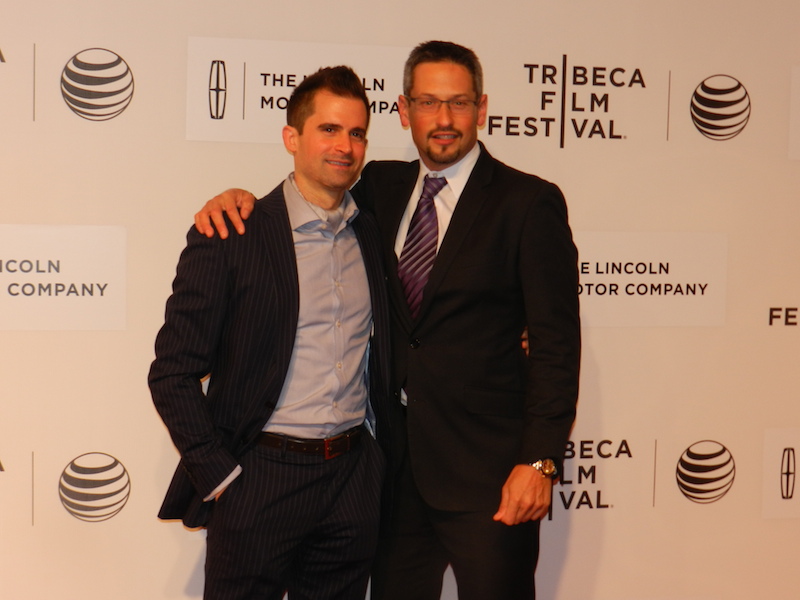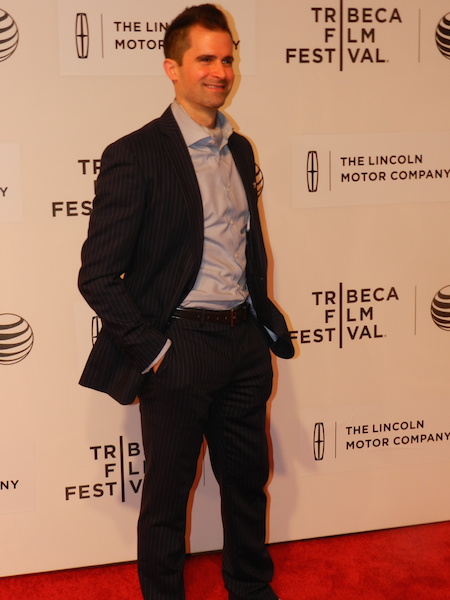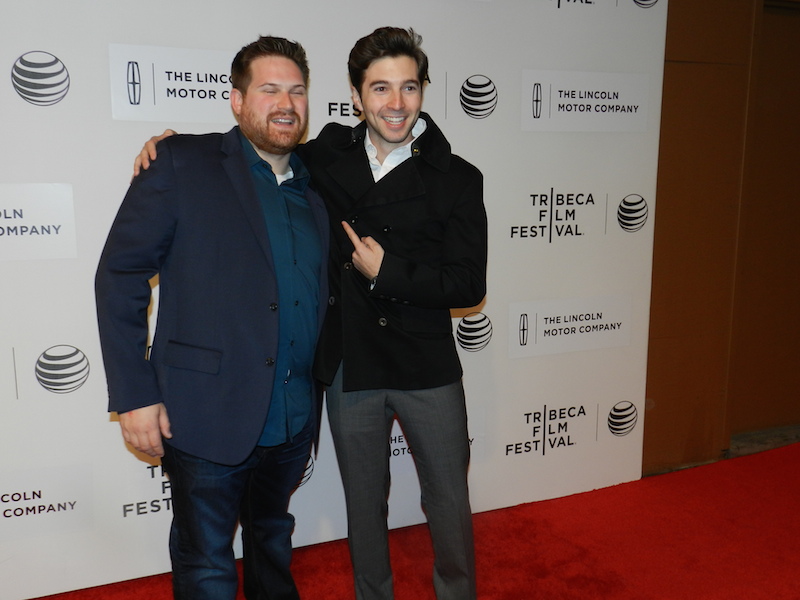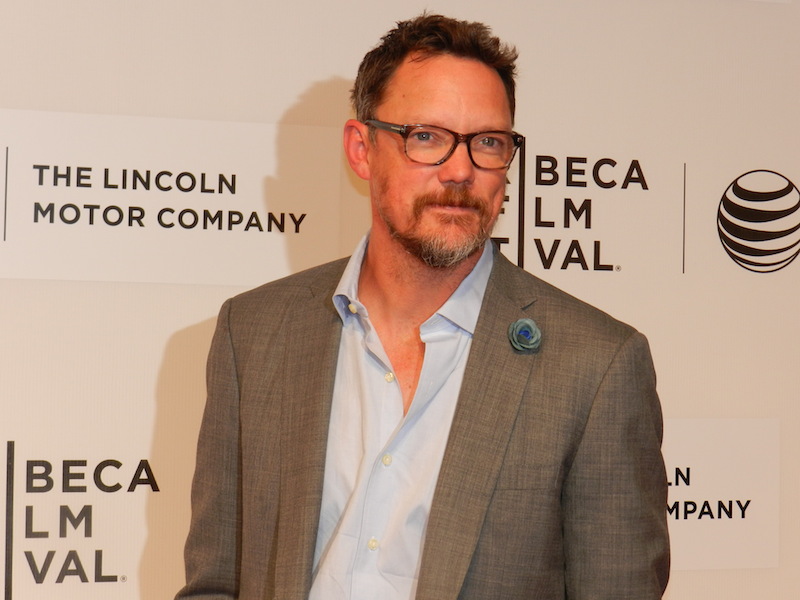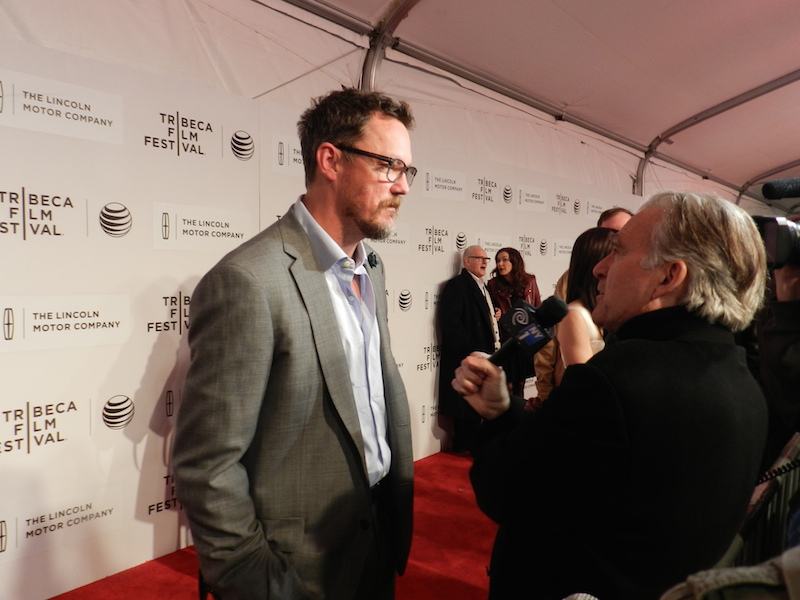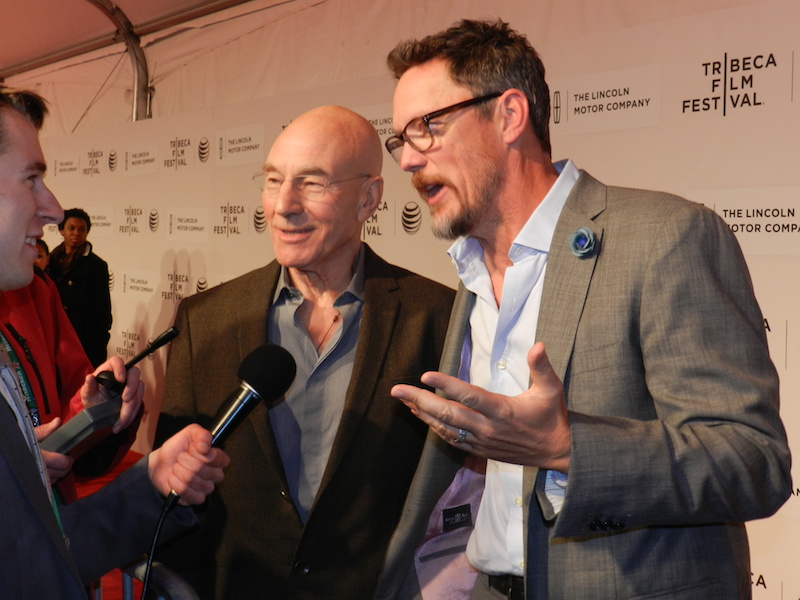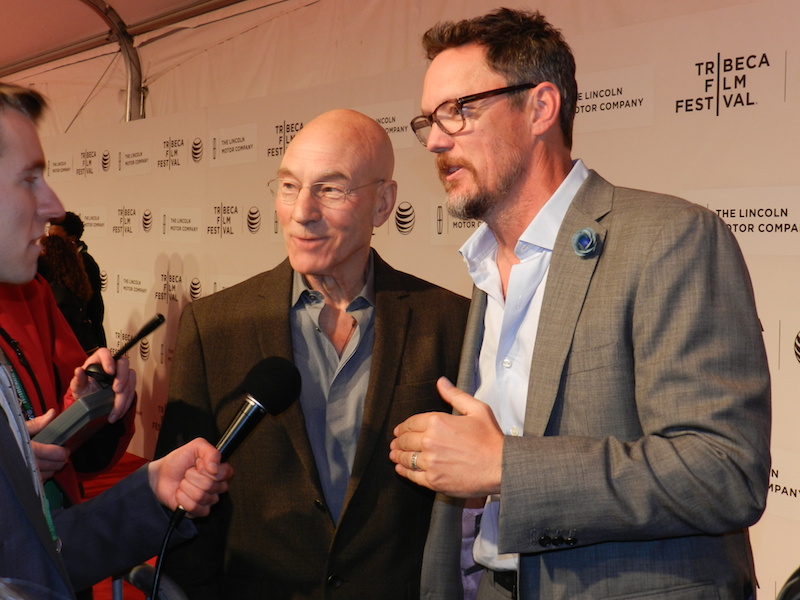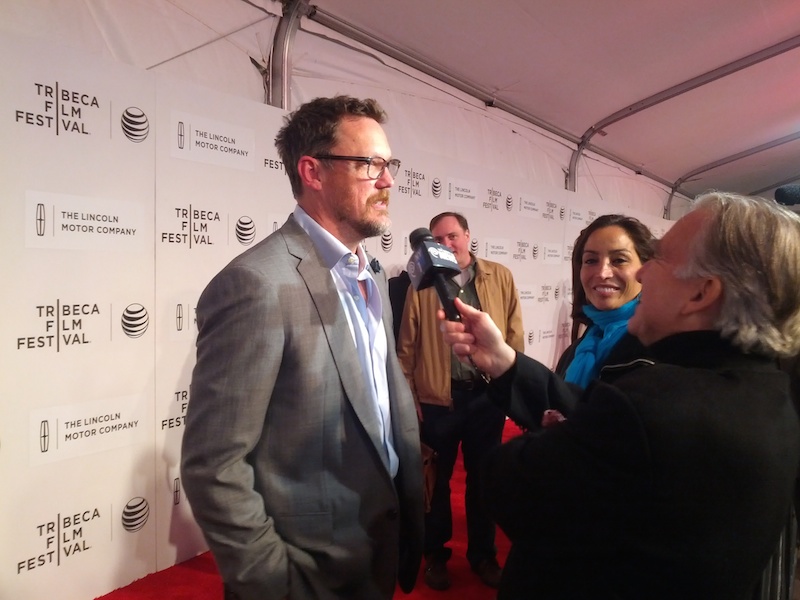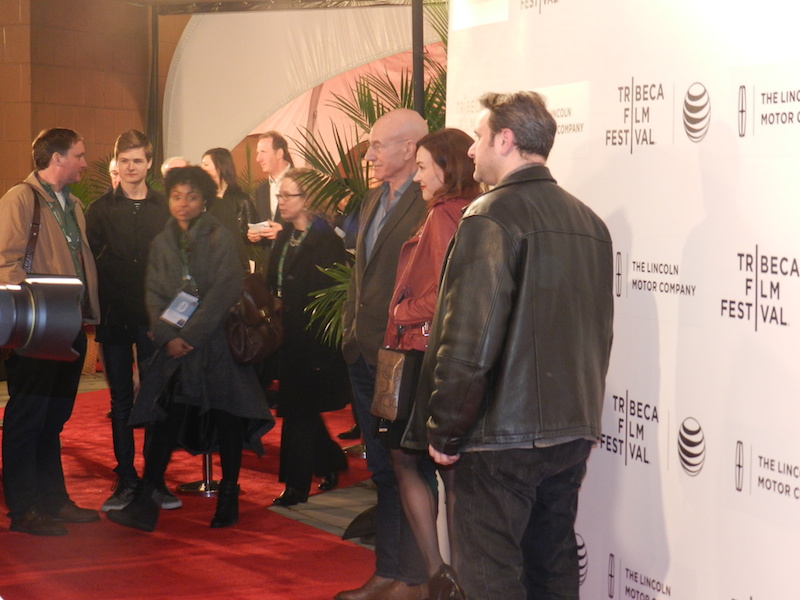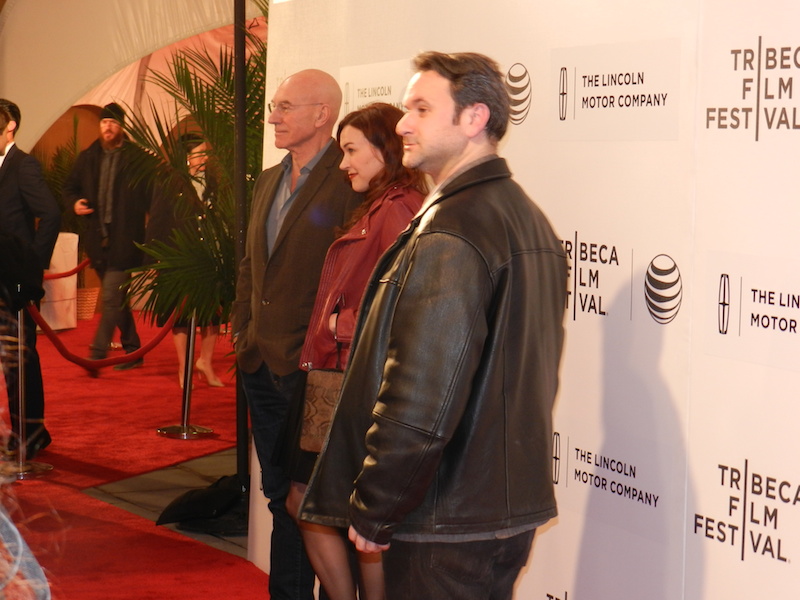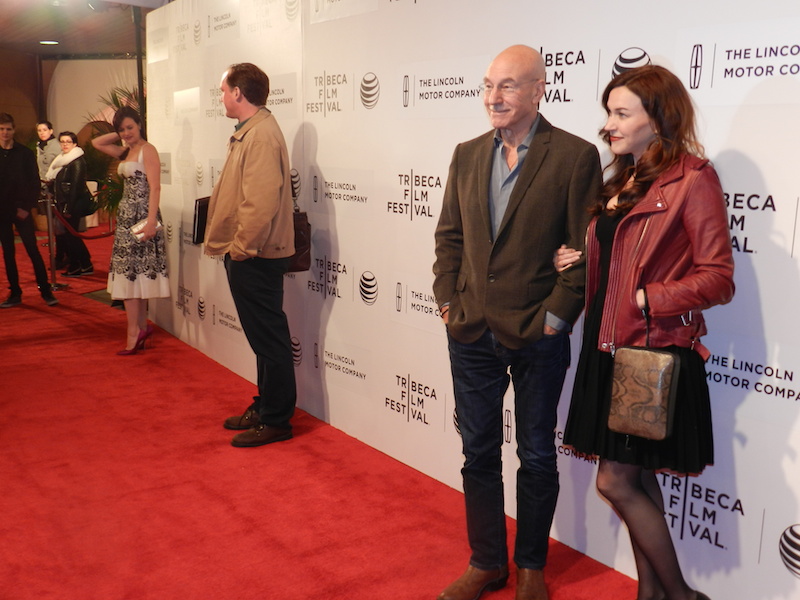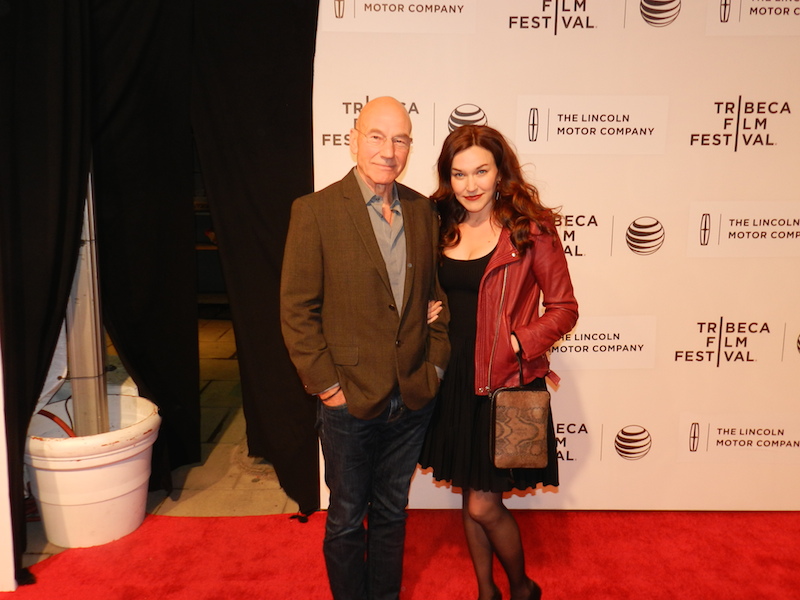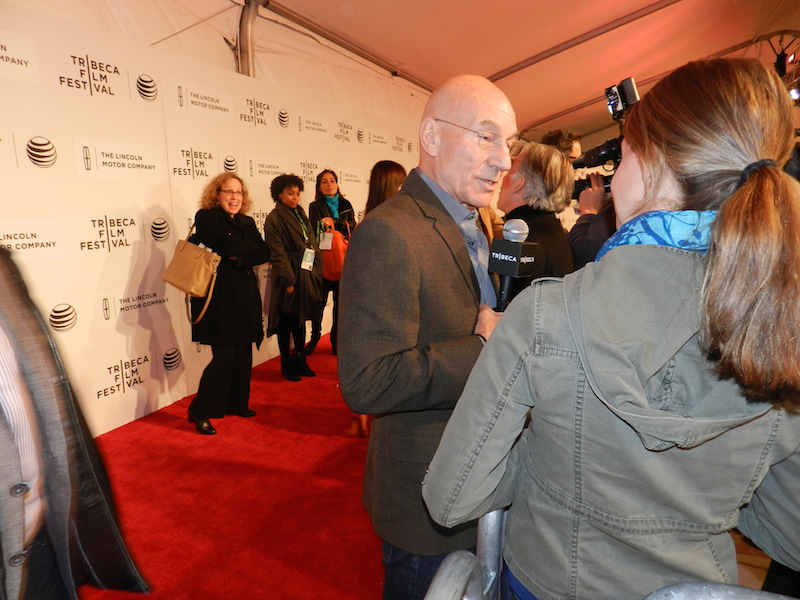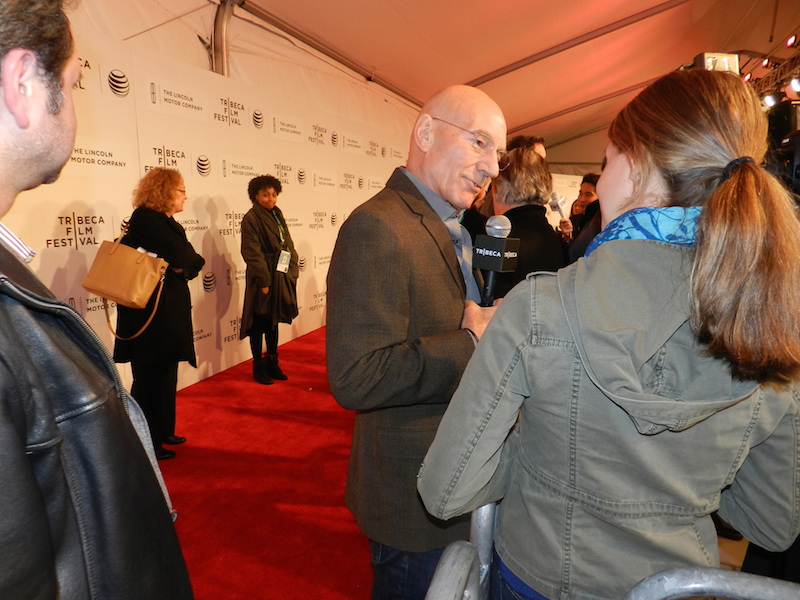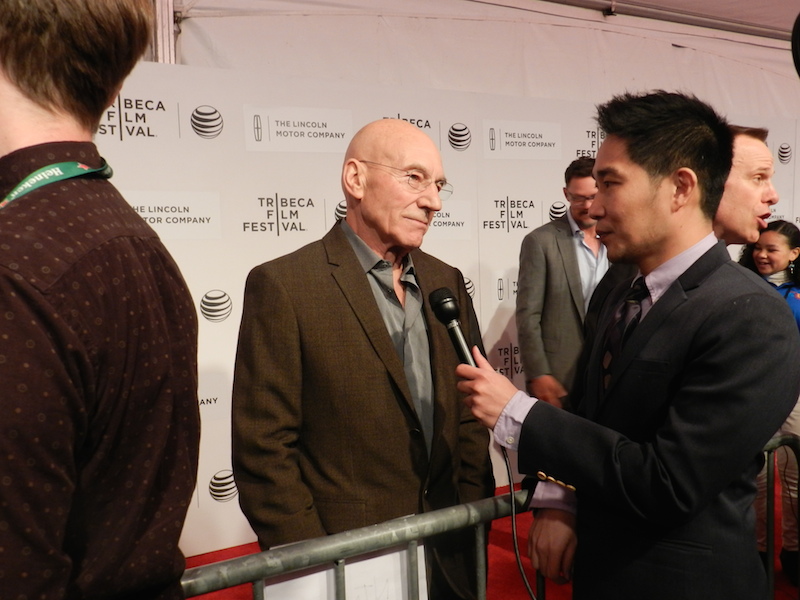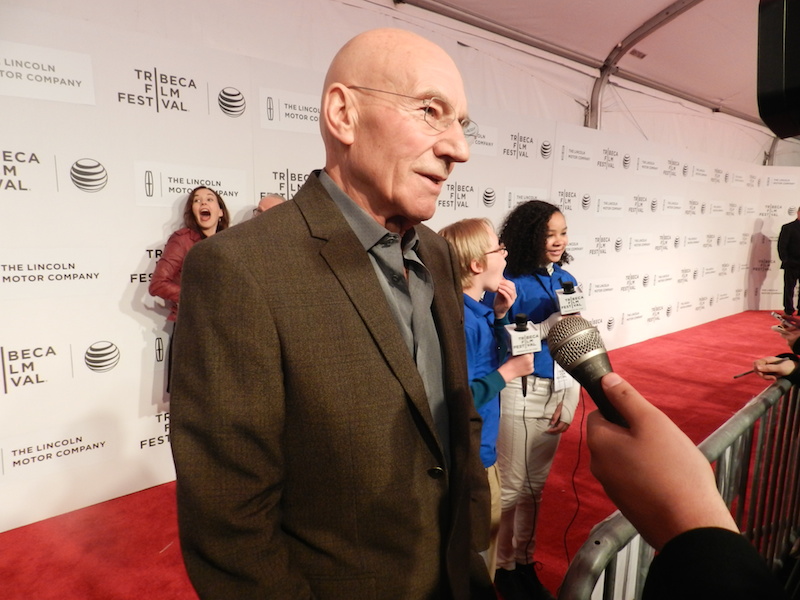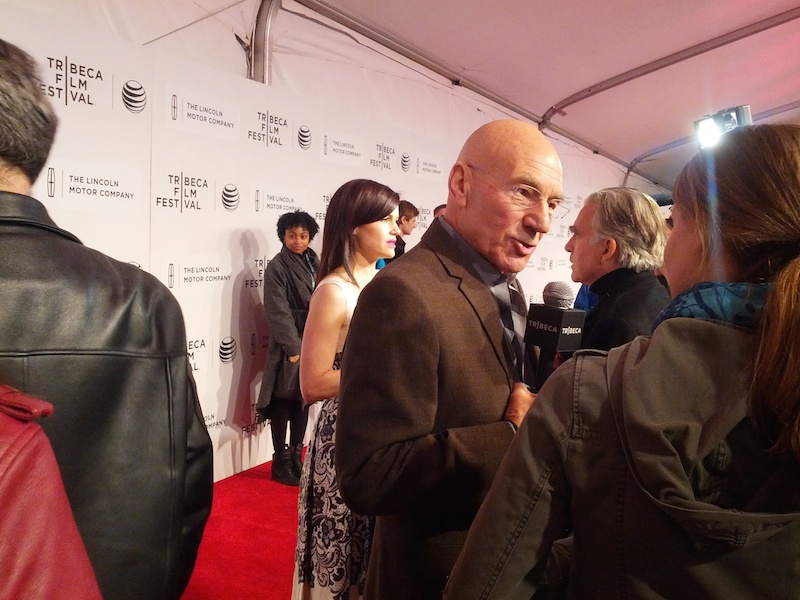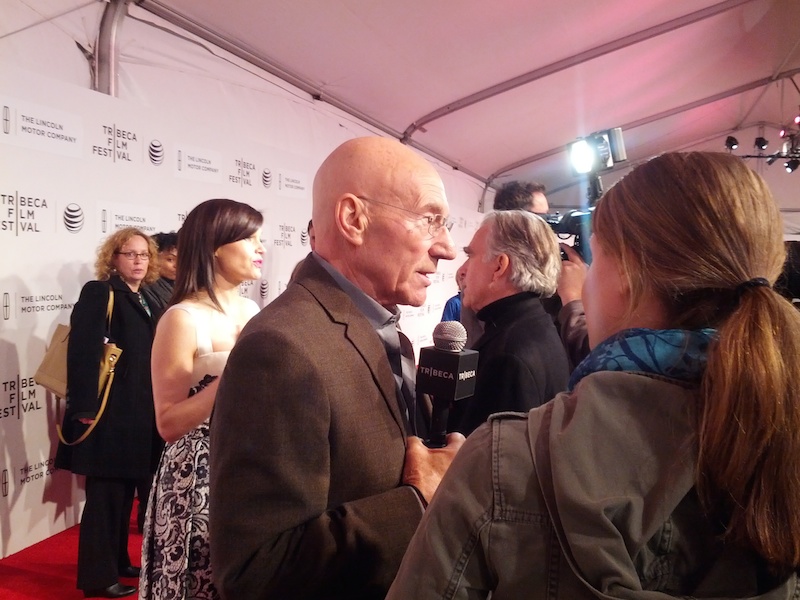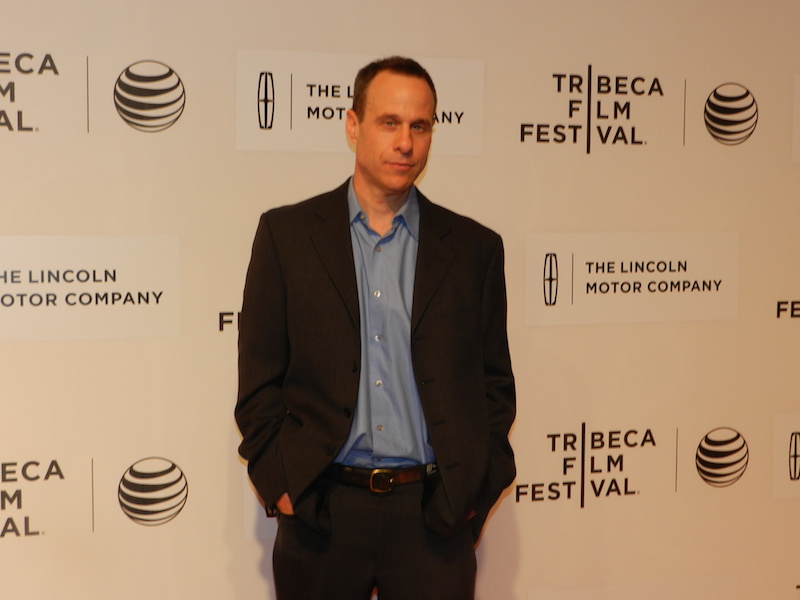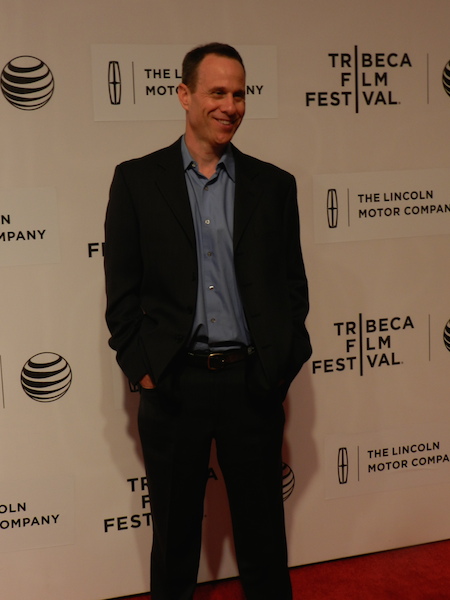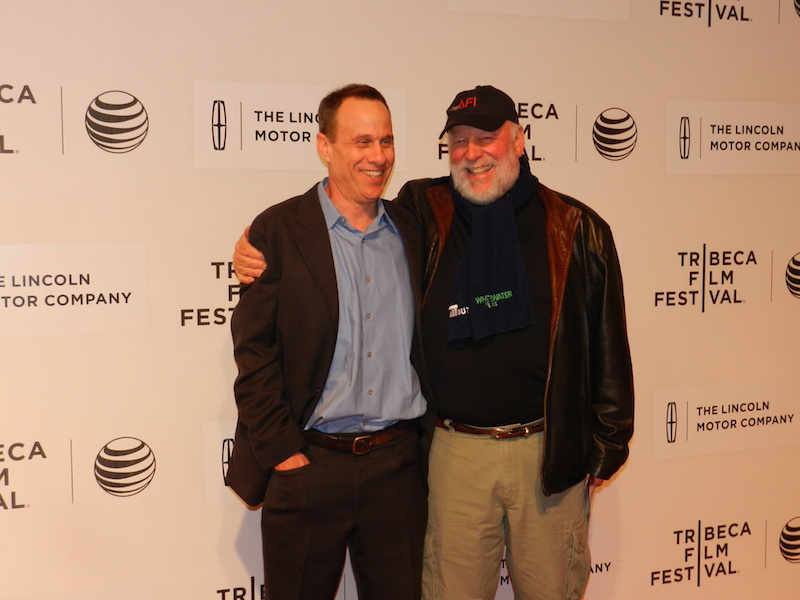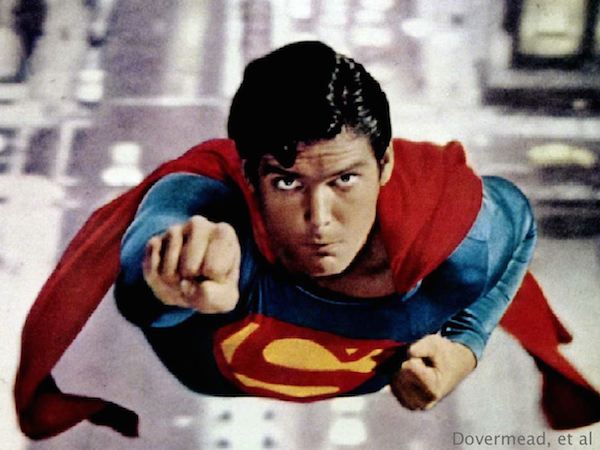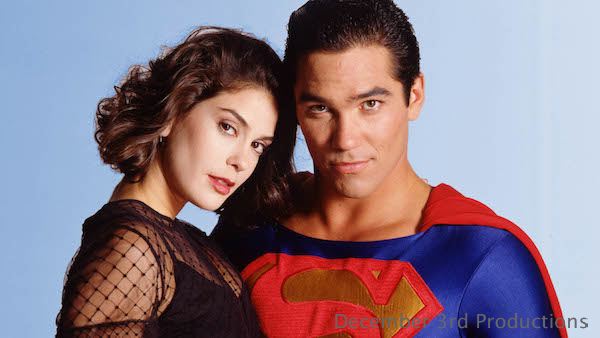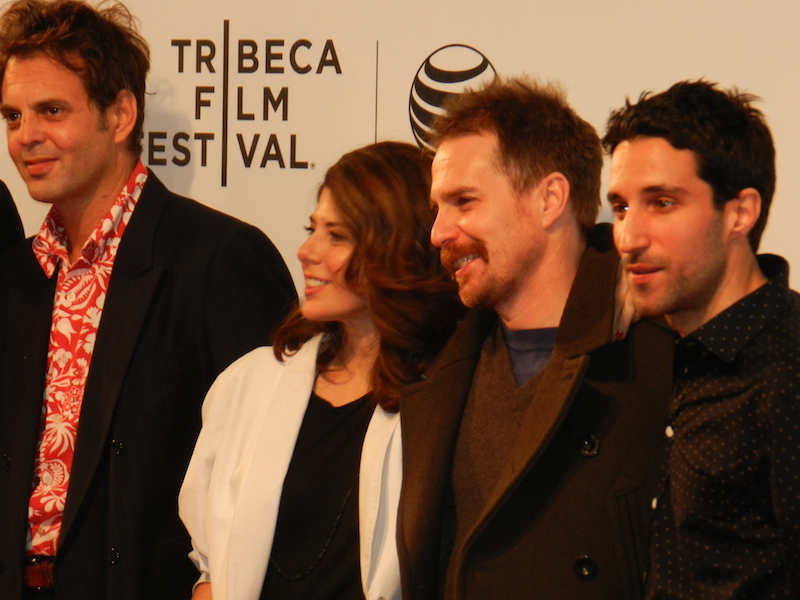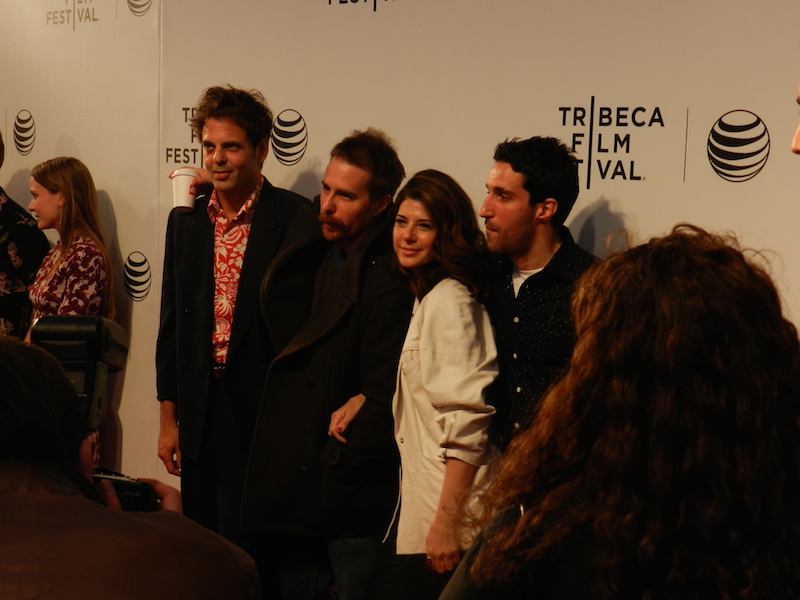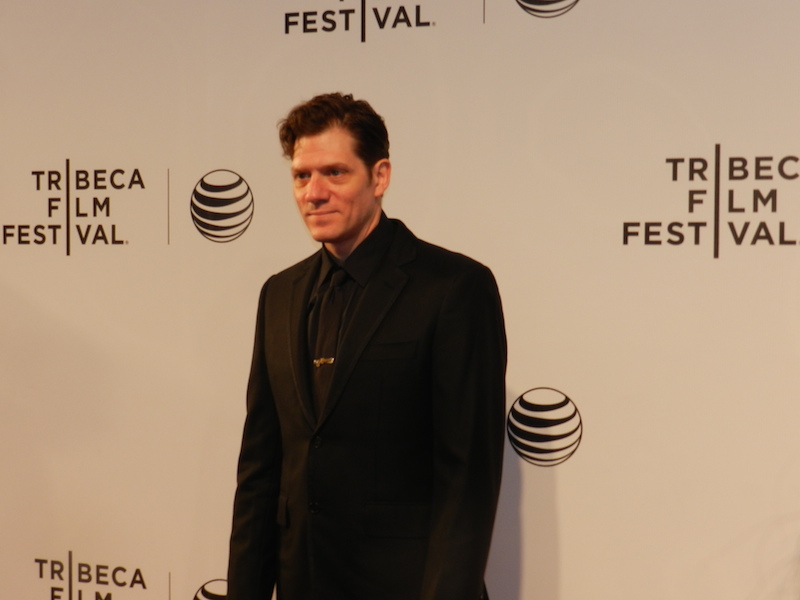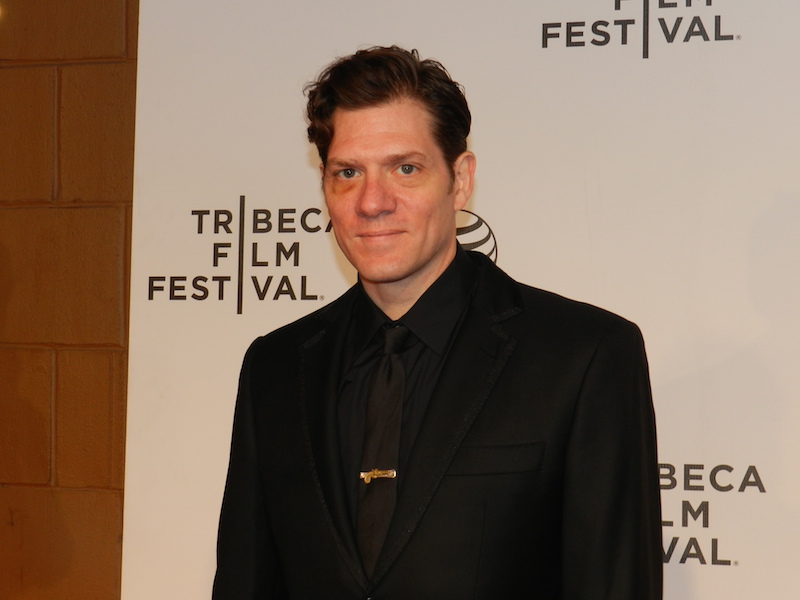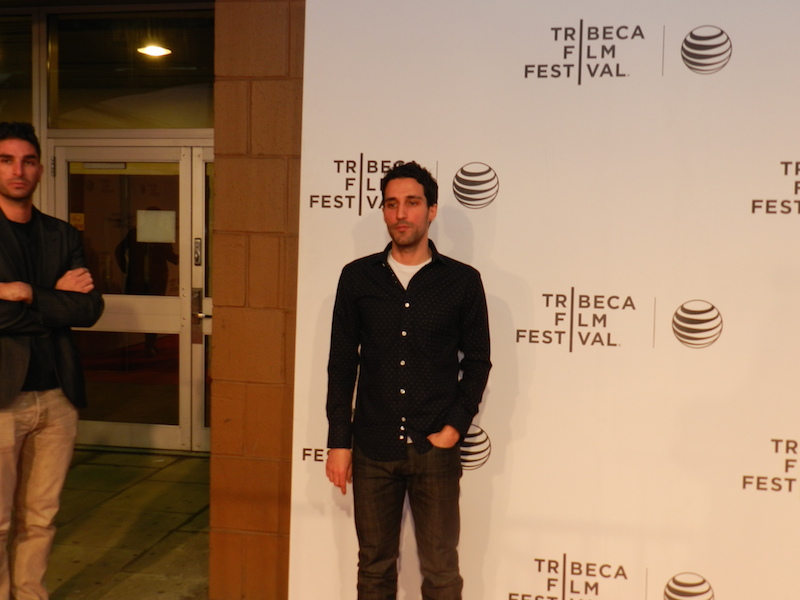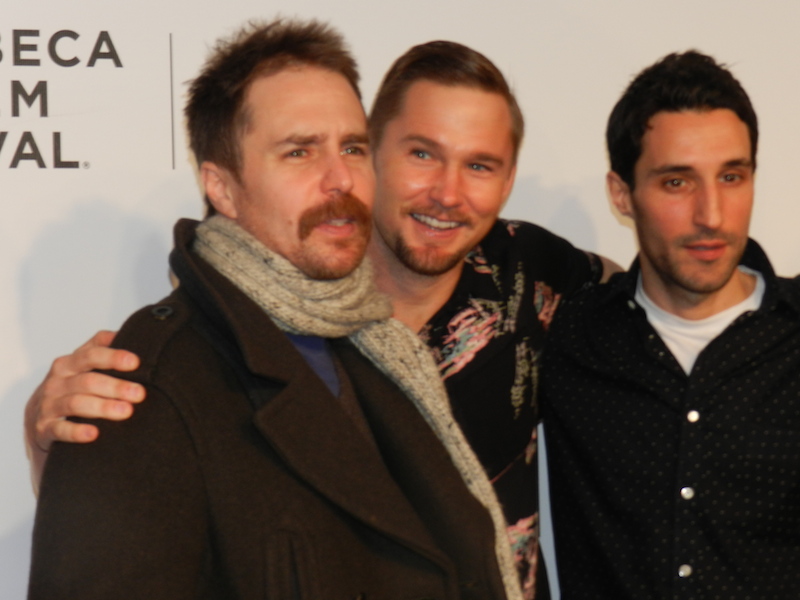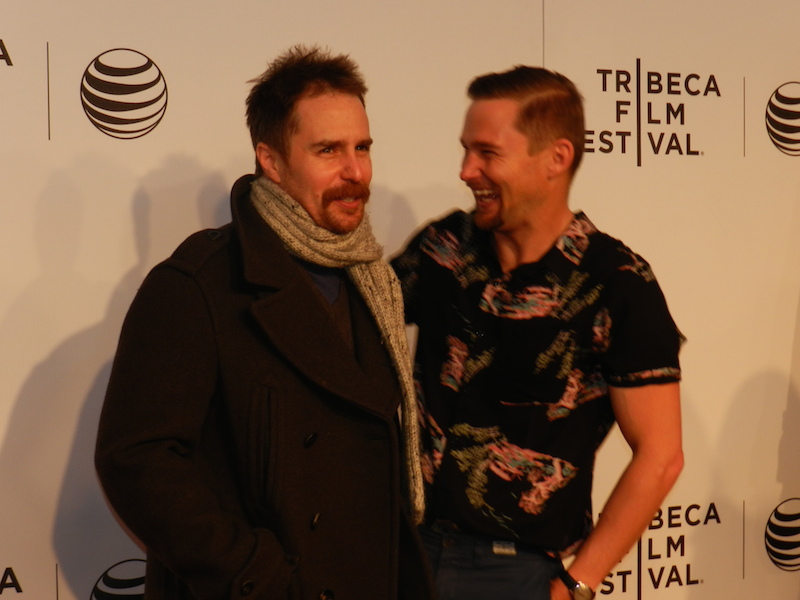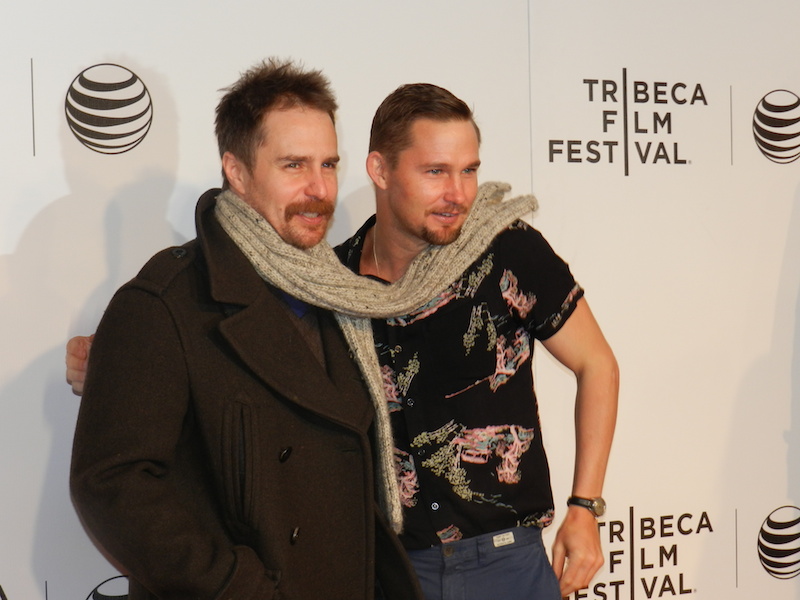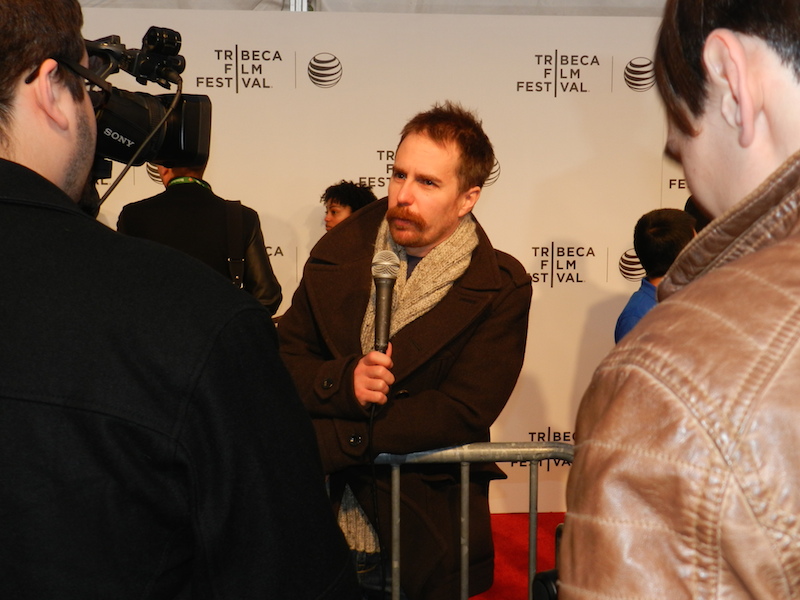Video of Sam Rockwell from the red carpet world premiere of Loitering with Intent at the 2014 Tribeca Film Festival:
Category Archives: movies
Red carpet photos from the world premiere of Match at the Tribeca Film Festival.
Featuring:
- Patrick Stewart
- Carla Gugino
- Matthew Lillard
- Writer and director Stephen Belber
- More cast and crew

Up, up, and away! A history of Superman
“Faster than a speeding bullet. More powerful than a locomotive. Able to leap tall buildings in a single bound.”
Look! Up in the sky! It’s a bird. It’s a plane. It’s Superman!
“Yes, it’s Superman, strange visitor from another planet who came to Earth with powers and abilities far beyond those of mortal men. Superman, who can change the course of mighty rivers, bend steel in his bare hands. And who, disguised as Clark Kent, mild-mannered reporter for a great metropolitan newspaper, fights a never-ending battle for truth, justice, and the American way.”
No hero has penetrated the American mainstream more than Superman. Yet despite this status, Superman does not share the same level of financial success in 21st century cinema as his counterpart heroes. Superman is too boring and too powerful, many will argue. He’s the corporate hero, clean-cut and idealistic, fighting for an arbitrary ideal of the American dream: “Truth, justice, and the American way.”
But Superman wasn’t always the stringent representative of American corporate culture. Kal-El of Krypton was once the representative of the underdog, the immigrant, and social justice. The Man of Tomorrow has long been a representative of the ideals of today, changing with the times to act as a reflection of our own perception of society.
Superman, like many of the heroes who followed in his footsteps, was born of tragedy, both on the page and in real life. Brad Meltzer, author of The Book of Lies, theorizes that Superman’s creation is directly linked to his creator’s most tragic moment.
In 1932, a robbery led to the death of Mitchell Siegel. Whether his death was caused by a murder or a heart attack has never been fully clarified, but Meltzer believes this event led Mitchell’s son, Jerry, to dream of a man impervious to bullets and fearless of crime.
Jerry Siegel and his artist friend, Joe Shuster, were two poor Jewish boys from Cleveland. They first conceived of a “Superman” as a bald, telepathic villain, who more closely resembles today’s Lex Luthor than the Man of Steel. This quickly changed, however, and by the time the boys sold the first Superman story to National Periodicals, today’s DC Comics, Superman had become a hero, with traits taken from mythology, science fiction, and the immigrant experience.
Action Comics #1 introduced Superman to the world in 1938. From the beginning, the traits that define the Man of Tomorrow were on display. The world’s first superhero fought off criminals, showcased his fantastic powers, and, as the lowly Clark Kent, fumbled his way with Lois Lane to begin a 75-year love triangle. This strange relationship between Kent, Lane, and Superman has been the focus of many stories across the decades.
The tragic relationship among these characters is representative of an idea that certainly must have existed in Siegel’s mind. As something of a geek, Siegel certainly believed he was more capable than anyone would give him credit for. If only the beautiful girls could see the real Jerry, perhaps they would like him. It’s a story that every kid who’s been called a loser can understand.
It was very much the man of Superman that appealed to fans. Comic readers have always been marginalized by society. The readers of Action Comics were primarily young boys, many of whom had been bullied in their lifetimes and could relate to the character of Clark Kent.
Borrowing from his father’s immigrant experience, Siegel wrote Superman as a visitor from a formerly great society, sent to a new world to live a better life. The planet Krypton was written as the old country, like the Siegels’ home of Lithuania. Upon arriving in the new land, Superman, like the immigrants of the day, changed his name from the Hebrew sounding Kal-El to the very Anglican, WASPish name, Clark Kent.
Superman’s origin story has often led to comparisons with the story of Moses, as both were sent away from their mothers to survive inevitable death and become a hero to the people. In time, the story has also been seen with many Christian connotations, most famously in the 1978 Superman film, with Marlon Brando’s Jor-El sending his only son from the cosmos to save the people of Earth from their own mistakes.
Christian stories were not the original inspiration for the creators’ work. Rather, Siegel and Shuster took inspiration from mythological heroes Hercules and Samson and from pulp heroes Flash Gordon and Doc Savage, while naming their hero’s base of operations, Metropolis, after the classic Fritz Lang movie.
Superman began life as a voice for Siegel and Shuster’s politics. Their hero fought against evil in all its forms, whether on the streets, in boardrooms, or in the nation’s capital. Siegel and Shuster’s Superman, years before becoming the representative of Eisenhower’s America, was the champion of social justice, unafraid to bend some rules to right terrible wrongs. Action Comics #1, in fact, sees Superman take on a corrupt U.S. senator, prompting the official’s confession by terrifying the man with a display of Kryptonian powers.
These powers were, at first, comparatively limited. In this first appearance, it was said only that Superman could leap one-eighth of a mile, hurdle 20-story buildings, outrun a train, with “nothing less than a bursting shell [able to] penetrate his skin.” It would be several more years before the Man of Tomorrow would take to the sky.
Action Comics #1 launched a phenomenon. Soon, everyone was releasing superhero comics. These comics remained popular throughout the War years, appealing to kids and soldiers alike. Symbiotically, the comics were also heavily influenced by World War II. With the existential threat of Nazis and Imperial Japan, the Man of Tomorrow became a patriotic hero to inspire American servicemen fighting overseas.
Unfortunately for the comics industry, popularity waned for the superhero genre in the years following the fight with the Axis. Superman, along with his eternal counterparts Batman and Wonder Woman, became the anchors of National Periodicals, pulling the company through the industry’s post-World War slump.
Superman did his part by dispersing his supporting cast across numerous titles. Superboy, which told the story of Clark’s teenage superheroic exploits, was launched in 1949. Jimmy Olsen and Lois Lane followed suit by starring in their own titles in the 1950s.
The superhero of the mid-century was different from the early Siegel and Shuster hero in more than just attitude. This Superman had been changed across several adaptations in different media to become the hero we recognize today. Some of the hero’s most enduring traits were actually just practical responses to real-world problems.
Kryptonite, debris from Kal-El’s home planet, was introduced in the Adventures of Superman radio program as a way to allow the actor portraying the hero to take some time off. Animators for the Fleicher Studios Superman shorts were the first to make the man fly, believing that a leaping hero looked poor in animation and that flying would simply be easier.
George Reeves brought Superman to life in the televised Adventures of Superman. To avoid the difficult question of how to make a man fly on camera, the producers decided to shoot Reeves either leaving or entering a building through windows to create the illusion of flight.
In 1978, Richard Donner and Christopher Reeve took the Man of Steel to the silver screen. Using new production techniques, the crew was able to simulate flight on film, allowing the movie to adhere more closely to the source material.
The movie was a huge success, with Reeve stunning audiences in his convincing portrayal of both the confident Superman and the perpetually terrified Kent. This success spawned three sequels and the 2006 homage, Superman Returns, directed by Bryan Singer and starring Brandon Routh.
While movie audiences were enamored by the high-flying hero, comic fans were demanding more realism out of their heroes. In a daring move, DC rebooted its entire multiverse in the crossover comic Crisis on Infinite Earths in 1986. A “last” Superman story, based in the original continuity, was offered to his original creator, Siegel, but had to be turned down due to legal disputes over ownership of the character. Instead, Whatever Happened to the Man of Tomorrow was written by Alan Moore, and told the story of Superman’s final adventure as a hero.
This “final” story was followed by a new “first” story. Man of Steel, written by John Byrne, retold the origin of the hero. Kent became the primary identity, with Superman being the secret. Krypton was explored further, extraneous elements to the mythos were dropped, and all of the hero’s adventures as Superboy were erased. Clark was now a young man coming into his own, trying to understand his supernatural powers and dedicating his life to helping the people of Earth.
Kent soon returned to television in the hit show Lois and Clark: The New Adventures of Superman. The eponymous couple were the focus of the show, with superheroics as just an added element. The success was short-lived after a jump the shark moment when Lois and Clark decided to get married, killing the sexual tension that made the show popular.
The launching of Lois and Clark foiled plans to have the couple marry in the comics, and the writers were forced to delay the nuptials. Plans for the following year of comics had to be thrown out, and the writers decided on a bold new plan: kill the unkillable man.
Death of Superman is considered a landmark of comic book history. The book was wildly popular. Collectors bought issues with the expectation of an eventual return on their investment. That will likely never come to pass, of course. This being comic books, Superman remained dead for a mere eight months before returning, with a mullet, to fight the forces of evil yet again.
In the 21st century, the Man of Tomorrow has proven to be the Man of Today, finding success across several media. Smallville, launched on the teen-centric WB Network in 2001, told the tale of young Clark Kent in his decade-long journey to become Superman. The show was a success and humanized the hero in the eyes of fans new and old.
While Kent was finding success on the small screen, Superman was having a tough time on the big one. Superman Returns was financially successful but disappointed the brass at Warner Brothers who expected higher returns. In response, a sequel was aborted in favor of a reboot helmed by Watchmen director Zack Snyder. Man of Steel, released in 2013, again retold the story of Superman’s origin as an alien from a phallic-inspired space society who landed in the middle of Kansas — where human lives are apparently not as important as an explosive action scene.
Criticisms of Man of Steel aside, the movie was again successful at the box office and proved that Superman is still as marketable as ever. Superman will return to the big screen in 2016’s tentatively titled Batman vs. Superman.
Superman may be boring to some, but he sells comics and sells tickets. The Man of Tomorrow has endured across generations because he inspires us to strive for more. Sure, his level of perfection is unattainable, but the humility of this all-powerful alien warrior offers us an example to live by.
Superman may not bring in as much capital as Batman or Iron Man, but the hero from Krypton has always been about more than that. Superman is a reflection of our society. He reminds us that in our darkest hours, we can always look to the sky.
Red carpet photos from the world premiere of Loitering with Intent
Cast and crew includes:
- Director Adam Rapp
- Marisa Tomei
- Sam Rockwell
- Brian Geraghty
- Michael Godere
- Isabelle McNally
- Ivan Martin
- Natasha Lyonne
- Britne Oldford

Tribeca Film Festival: Spotlight Section
Curiata.com will be covering the 2014 Tribeca Film Festival live from New York City. Vote for which films we should screen and review from the Spotlight Section by commenting on the Facebook post below.

Tribeca Film Fest: World Narrative Competition
Curiata.com will be covering the 2014 Tribeca Film Festival live from New York City. Vote for which films we should screen and review from the World Narrative Competition by commenting on the Facebook post below.

God must be dead tired of films like this
I would’ve been content to let God’s Not Dead come and go from theaters un-commented-upon, but a movie that makes $33 million over three weekends demands a response. Mine is: ugh.
There is a moment early in the film that seems to perfectly encapsulate its worldview: a student, tasked by his abusive philosophy professor with proving God exists, includes in his PowerPoint presentation a slide with Michelangelo’s “Creation of Adam” painting. Something struck me as wrong with the image (mainly because I remembered this) and a quick Google search after the film assured me I was correct: Adam’s penis was gone, airbrushed out of the movie, along with any hints of sensitivity, intellectual rigor, or genuine struggle with faith.
I don’t even want to waste any more time trying to summarize the “plot” of this movie, which many reviewers have already compared to an adaptation of all those infuriating email forwards that well-meaning people sent you years ago. The story exists only to create moments in which Josh (Shane Harper) can refute Professor Radisson’s (Kevin Sorbo of the television series Hercules) increasingly bizarre attacks on religion. This probably shouldn’t have been surprising after the opening sequence credited an “apologetics researcher” as a member of the crew.
About halfway through, I began to wonder if God’s Not Dead takes place in an alternate universe. In that universe, “gotcha” reporters are offended that the Duck Dynasty family hunts and prays — not that they spout antiquated remarks about homosexuality; professors are free to date students currently taking their classes (!); Chinese exchange students speak to their parents in Cantonese but text them in English; minorities exist only as potential converts or awful tropes; men and women get into long-term relationships without realizing the people they’re dating are monsters.
But those are fairly trivial concerns and, in the end, it’s obvious the producers aren’t trying to create a sci-fi vision of another corner of the multiverse — they think what they’re showing us is a reflection of reality. They perceive America as a place in which Christians are part of a dwindling group whose persecutors lurk around every corner.
This is the state of affairs that Fox News commentators often describe to their viewers, despite recent polling showing 74 percent of Americans identify as Christian and despite news of actual persecution of Christians elsewhere in the world. This is the world that Sen. Ted Cruz lives in, saying that, due to the Affordable Care Act, “religious liberty has never been more under attack” in a speech at the ultra-conservative Liberty University. In the world depicted in this movie, Christians are blind to the many, many privileges they receive and instead focus all their energy on utterly trivial slights.
What’s worse, God’s Not Dead shows us very little about what it means to be a Christian. If an alien civilization were given only this film and then asked, “What make someone a Christian?” they would likely respond, “Intellectual assent to the proposition that God exists — and going to Newsboys concerts” (or however they’d say it in alien). They might also mention prayer, because people in the film talk about it fairly often, but there’s only one really memorable prayer in the film, and its purpose is to convert someone to Christianity. There is never a genuine attempt at communion with the divine and there is very little concern with helping one’s neighbor (unless you count telling them that God exists) — the two things Jesus said were most important.
Also absent from the movie is any genuine struggle. Josh certainly takes some risks by accepting the professor’s challenge: he may lose his girlfriend (he’s better off without her) and his future career as a lawyer is somehow in jeopardy (although he is in his first semester of college), but the decisions he makes are never really difficult. Unlike the main character in Noah, Josh is certain that he’s choosing the right path at every fork in the road.
Another of the characters [spoiler alert] is a Muslim who secretly converts to Christianity and, in a disgustingly bigoted scene, is beaten and thrown out of her home by her father. A student from China is inspired to talk about God with his father, who shuts down the conversation and tells him to listen to the professor. But don’t worry — the next day they are both rocking out at the aforementioned Newsboys concert. Aside from these racist stereotypes, there are several other characters who, in the course of the movie, decide to believe in God (and go to that damn concert!), and yet, for the life of me, I can’t explain why. They just … do. The writers chose to spend all their time crafting arguments instead of characters.
This inability to recognize people as people is not just bad film-making, it’s antithetical to Christianity. (I am an ordained Christian minister as well as a flawed person, so please forgive me for the preaching you’re about to read.) My faith means nothing if it doesn’t connect with real-life, flesh-and-blood human beings — people who’ve experienced pain I can’t imagine and who draw strength from beliefs I can’t begin to comprehend. I will have failed in my calling to love my neighbors if I see them only as drones to be assimilated to my way of thinking.
Instead, I must seek “not to be understood, but to understand.” I have to work out my faith with fear and trembling. I have to care for the “least of these” by working to provide food and water, welcoming strangers, clothing the naked, and caring for those society deems unworthy. I really need to go volunteer at a Habitat for Humanity work site, or a homeless shelter, or a soup kitchen.
At the very least, I have to start seeing better movies.

Why is Captain America still relevant?
Captain America returns to the silver screen Friday, and in honor of this comic book icon, let us take a look back at the character’s history.
It was 1941. World War II was raging in Europe and the Pacific. Men and women were dying to protect their homelands from invading armies. Hitler, Mussolini, and Hirohito were guiding their nations toward new world empires. And the United States was enjoying its status as a neutral nation, content with being the Arsenal of Democracy. Some Americans, however, saw that entry into the war was inevitable, and it was important that we be on the right side.
Joe Simon and the legendary Jack Kirby were two such men. These comic book visionaries saw an opportunity to voice their politics and make a few dollars on the way. Captain America, a living symbol of the United States itself, was introduced in Captain America Comics #1, in March 1941 — a rare situation where the publishers had such faith in a character that they debuted him in his own book. The attacks on Pearl Harbor were still 9 months away, yet the debut issue saw Cap socking Adolf Hitler in an illustration still satisfying today. Simon and Kirby, both of Jewish families, used the comic to voice their concerns against the Third Reich. Even if America was officially neutral, Simon and Kirby knew Hitler was a real-life supervillain, and Captain America could stop him.
Captain America is a stunning character. Despite his genesis as wartime propaganda, the character has survived and flourished to this day. How is it that a character so defined by a long-passed era in history is still so relevant in the age of the smart phone?
Captain America does not necessarily evolve like Batman but is not as much of a static symbol as Superman. While both heroes represent the American ideal, Steve Rogers has a much more unique character compared to the Man of Steel, whose character is more defined by brute strength than cunning and tactical mastery.
Steve Rogers was a regular man. He had been a scrawny, naive boy who just wanted to fight for his country, and fight for what he believed was right. Steve was willing to do anything, even undergo a dangerous and untested experiment, to make himself strong enough to fight the Nazis. He represents the person we wish we could be and know we can become.
The Super Soldier serum gave Rogers near-perfect capabilities. Captain America is not impervious to bullets or faster than the speed of light, but is as fast and strong as any human can conceivably become. He is a character who is only as capable as any of us can be.
Cap remained popular throughout World War II, but became an anachronism when the patriotic fervor of wartime died down. As a result, the hero faded away from publications.
Nearly 20 years later, the hero was revived to head up a super-team, the Avengers. In Avengers #4, the old hero was found, frozen in suspended animation. When revived, Cap became a new, more intriguing character. No longer was he simply a symbol of America in a time of war. He was now the living anachronism, a man out of time, a man haunted by the death of his sidekick, with memories of the worst time in human history, trying to adjust to the world of the 1960s.
Cap was the perfect man to lead the Avengers. A team full of hot-headed individuals like Thor, Iron Man, and Ant-Man needed a uniting symbol to rally the troops. Cap was a hero to the heroes, and a warrior of honor to be respected and revered.
Captain America became the traditional leader of the Avengers through most incarnations of the team. His tactical abilities make him an invaluable member of the group, even if his strength and speed can’t compete with his teammates like Thor and Quicksilver. Cap’s abilities are so valued that, even in a rare crossover comic featuring the stars of Marvel’s Avengers and DC’s Justice League, JLA/Avengers, Rogers was asked by Superman to lead the joint effort to bring down the supervillain Krona with no objections made by any of the other heroes.
Captain America’s status as a symbol has allowed him to tackle some of the United States’ most difficult and controversial topics over the decades. The first African-American superhero in mainstream comics, the Falcon, was introduced in Captain America #117 in 1969. The Watergate scandal was handled by Cap, with the hero becoming so disillusioned with his government that he abandoned his longtime moniker in favor of “The Nomad,” to denote his status as a man without a country. Rogers eventually re-assumed the identity of Captain America, deciding he should act as the symbol of the American ideal, not the American government.
In the 1980s, Cap was placed into an impressively progressive story arc. Rogers found his best friend from childhood, Arnie Roth, still alive after all these years. Arnie is, without ever explicitly stating it, obviously gay. This revelation doesn’t phase Cap in the least. Captain America accepted his friend for who he was without ever questioning Arnie or himself. Rogers continued to be emblematic of Americans at our best.
It was only a matter of time before one of America’s icons made a successful venture onto the big screen. Seventy years after his debut, Captain America: The First Avenger did a magnificent job of telling the essential origin story for the Marvel Cinematic Universe’s first superhero. Cap was shown in his element, punching Hitler, fighting Nazis wielding super-weapons, and inspiring his troops to follow his example. He saved the world from nuclear-level catastrophe and sacrificed himself in the process. His actions would reverberate across the Marvel world and inspire generations of heroes.
In the deleted scenes to Marvel’s masterpiece work, The Avengers, Chris Evans’ Rogers character is shown adapting to a world no longer his own. Unlike in the comics, in which Cap was revived after only 20 years, the cinematic Rogers was revived after nearly 70 years and was introduced to a world far beyond his comprehension. It’s a shame these scenes did not make the final cut, as Evans’ acting ability is on full display when he portrays Captain America as a lost soul trying to find his way in a new world. The subtlety in his expressions brings the inner turmoil to light remarkably well.
The success of The Avengers was unparalleled for a movie based on a comic book property, but it is the success of the Captain America standalone movie that is truly astounding. Pulling in $370 million worldwide and receiving a 79 percent approval rating on Rotten Tomatoes, Captain America proved that Cap is a hero for all ages. But how?
In a world full of cynics and overwhelming use of irony, Captain America seems quaint and ridiculous — an odd relic from a more black-and-white time in which good and evil could be easily defined. Perhaps we yearn for that level of simplicity and can relate to Cap’s struggle to understand a world of deeper conflict. Maybe Captain America speaks to the more innocent times all of us experienced in our lives. He acts as a reminder of our idealism and the world we wish to see. Or maybe we can all relate to the scrawny kid who just wanted to do good. Captain America has always been a man who speaks to what we want to be and is the appropriate surrogate for when times get tough. We may not be able to stop Hitler, but Cap can travel to Germany and sock him on the jaw for us.
When Captain America: The Winter Soldier comes to theaters Friday, we will see the return of Cap, Black Widow, and Nick Fury, along with the introduction of the Falcon and the Winter Soldier. The movie promises to examine government overreach and the military-industrial complex. Cap will again fill the role of the common man working to fix the mistakes of our world. Winter Soldier looks to be a movie that will challenge our view of the world and ourselves — and will look really cool when doing it.
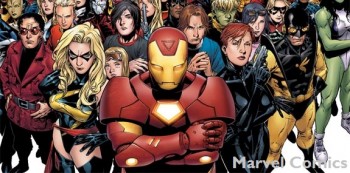
Despite spring, Winter comes to Marvel Universe
Spring has finally arrived here in the Northeast U.S., bringing sunshine and warmer temperatures — and, hopefully, no sign of snow for at least seven months. It’s been a longer, colder winter than usual, and we’re all thankful it’s just about over. However, despite our eager anticipation of spring, there are three words currently on many fan*s’ minds: Winter Is Coming.
In fact, winter returns this weekend in more ways than one. First up on Friday, we have the next installment of Phase II of the Marvel Cinematic Universe (or MCU), as Captain America: Winter Soldier opens in theaters. Then on Sunday, season four of Game of Thrones premieres on HBO. I’m having a hard time choosing which one I’m more excited about, though my love for all things Marvel might win out in this case.
I am a huge superhero fan. I don’t read a lot of comics, but I will watch nearly anything related to either the DC or Marvel universe. I watched every season of Smallville, even when I wasn’t thrilled with the plot lines (though that last season made up for the less than stellar ones), and I am a big fan of Marvel’s Agents of S.H.I.E.L.D., Arrow, and am excited about the new Flash series. But most of all, I love the MCU itself.
Even before anyone really knew Marvel’s plan for the MCU, I was an Iron Man fan, and I thought it was brilliant that Robert Downey Jr.‘s Tony Stark made an appearance in The Incredible Hulk, tying the films together. By the time Iron Man 2 came out, I was starting to hear about the MCU, so I really enjoyed the little details in that film: the prototype of Captain America’s shield in Tony’s lab, and Phil Coulson being called to New Mexico, tying the film to Thor and Captain America: The First Avenger when those films came out a year later.
Bringing together this many individual films and characters was entirely unprecedented prior to the MCU, and I love the way they make everything work together. I’m even more excited about it now that there is a television show that also plays into everything happening in the MCU. Spending an hour in the world of Marvel on a weekly basis is a welcome break from schoolwork and routine. I was also very excited they resurrected Coulson for the series.
I do have to admit, before the first Captain America movie came out, I was a little apprehensive. Prior to playing Steve Rogers, Chris Evans‘ filmography wasn’t all that impressive, and he had always been a supporting cast member. While I liked Evans, I had my doubts as to whether or not he would be able to carry a film like Captain America — not to mention how iconic the character is, which adds a whole new level of pressure to the role.
I had similar misgivings about Thor. I didn’t even know who Chris Hemsworth was when he was cast in the role, until I looked him up and realized he had played Captain Kirk’s father in the 2009 Star Trek film. (Confession: I remember thinking at the time that the guy needed to find larger roles where he didn’t die in the first 10 minutes.) I was also concerned about how they would portray Asgard and the Rainbow Bridge without it being too cheesy.
Fortunately, I quickly learned I needn’t have worried about either film. I loved both movies immediately. Asgard looked good, and Evans did not disappoint as Captain America. In fact, both films are among my favorites within the MCU. For this reason, I’m able to extend them some faith when it comes to Guardians of the Galaxy, which sounds bizarre in concept but, after the first trailer, I can’t wait to see it. I think I had “Hooked on a Feeling” stuck in my head for an entire week after that trailer was released.
I never had any doubts about The Avengers. To begin with, I was already a big fan of the entire cast and all the characters. I was even excited about Hawkeye and Hulk. Even though we’d only seen Jeremy Renner‘s Hawkeye for about 10 minutes in Thor, and hadn’t seen Mark Ruffalo at all in a Marvel film, I like both actors and I knew they were great choices. Therefore, I had already been extremely excited about the film when they announced Joss Whedon would be writing and directing. The minute I heard that news, I no longer had any doubts about how good the film would be — I knew Whedon wouldn’t let fans down.
Phase II of the MCU has gotten off to a great start with Iron Man 3 and Thor: The Dark World. While Iron Man 3 wasn’t exactly my favorite of the Iron Man films, it was a great follow-up to The Avengers, and I really appreciated the way they showed a hero dealing with the symptoms of post-traumatic stress disorder. Thor: The Dark World was, in my opinion, better than the first — and I loved the first one. I’m also thrilled with the setup for the third film; I can’t wait to see where they take that twist they gave us in the end. (I assume it won’t be addressed until the third film, since we’ve been told more than once Loki will not be appearing in Avengers: Age of Ultron.)
Tomorrow, it’s Captain America’s turn on the big screen. If the previews are any indication, this will also improve upon its predecessor. As I stated before, I haven’t read any of the comics so I am not remotely familiar with the Winter Soldier story line — which I’ve decided is definitely to my benefit when watching movies based on other source material. I’ll never forgive X-Men: The Last Stand for what it did to the Dark Phoenix saga (among many other failings), and I never even actually read those comics, I’m just familiar with the story line.
If you’ve been watching Marvel’s Agents of S.H.I.E.L.D. (which you should be, because it finally started getting really good around episode 6 and has been improving ever since), you know they’ve been setting up the division within S.H.I.E.L.D. for Captain America. Rumor has it the next episode will have a direct tie-in to the film. I’m hoping it’s a little stronger tie-in than just having the agents cleaning up the mess in London after Thor: The Dark World.
This weekend is definitely a good weekend to be a fan*. Tomorrow, I’ll be sitting in the theater watching Captain America: Winter Soldier, and Sunday night I’ll be settling in on my couch for the premiere of Game of Thrones. Sure, spring may have just arrived, but winter is coming.
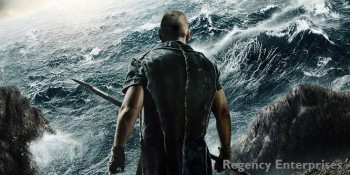
Noah makes you think — and keep on thinking
Darren Aronofsky’s epic Noah, which opened this weekend, is facing considerable criticism, primarily from Christians who view it as an unfaithful rendering of the biblical story. Rather than worry about whether or not the film uses the word “God,” I prefer to view it as a successful attempt at the Jewish interpretive practice of Midrash — whether Aronofky realizes it or not — and a meditation on our modern-day limited experience with divine intervention.
Midrash is a practice that seeks answers for the questions that remain once we’re finished reading the stories in the Bible. It explores unexplored details, pushing us to think more deeply about the implications of the text.
“The Holy Scriptures abound with gaps, abrupt shifts, and odd syntax,” writes Judith Kunst in The Burning Word. “Jewish Midrash views these troubling irregularities not as accidents or errors or cultural disparities to be passed over, but rather as deliberative invitations to grapple with God’s revealed word — and by extension, to grapple with God.”
Grappling with God is at the heart of Aronofsky’s film, which presents Noah as a man of faith who, in a departure from the biblical narrative, does not hear directly from “the Creator.” The concern about God’s presence in the film is laughable — even the film’s primary antagonist, Tubal-cain, believes in and despises the Creator, for seeming to abandon humanity. Both men are forced to act with a great degree of uncertainty. Noah is compelled to make certain decisions but has no guarantee that they are, indeed, correct.
I’m glad Aronofsky held back from giving Noah a voice from heaven, because it’s not often that we get one to help guide our choices. Oftentimes, all we can do is acknowledge our imperfections, wrestle with the decisions, and move forward in faith.
The story of Noah is often reduced to cute cartoons about paired animals on a boat with a smiling, grandfatherly character taking care of them. The horrific backdrop to that scenery is the divinely-sanctioned genocide of all of humanity. If I believed the story were historically accurate (rather than an adaptation of an even older Babylonian myth), I would be terrified of the deity it reveals and wonder how the main character could allow innocent human beings to perish outside his Ark.
By filling in some of the narrative gaps that exist in the story, this film actually provides a palatable explanation for how Noah could live with himself [mild spoiler alert], positing that, in fact, he thinks God is calling him not to repopulate the earth with humans, but to rid the earth of them — he and his family included. Further, it shows how much of a struggle this is for Noah and how uncertain he is about what he feels he must do. Aronofsky presents his main character as someone who recognizes how flawed he is and is prepared to make the ultimate sacrifice in order to prevent his flaws from destroying creation.
Here, too, the film explores the ambiguity of the biblical text as it relates to the question of what the Creator has directed humans to do with creation. In the first chapter of Genesis, God creates humankind, giving them “dominion” over all the earth and commanding them to “subdue” the creatures and plants within it. The Hebrew word radah (“dominion”) is used to describe the way kings rule over their territories, while kavash (“subdue”) is used in the context of slavery. Does the Creator want humankind to rule the earth as benevolent monarchs or as heartless slaveholders? The film depicts both viewpoints, obviously coming out in favor of Noah and his message of environmental protection.
In fact, Aronofsky’s surprising lack of subtlety is far more objectionable than any liberties he may have taken with the plot. Consider the conversation between Noah and his adopted daughter, Ila, at the end of the film. He explains a choice he made, and his reasoning is exactly what we would’ve assumed it was. (If I were any more specific, it would dampen some of the climactic tension of the film.) Suffice to say: that conversation is completely unnecessary for intelligent film-goers.
Noah is a film, a story — a character — designed for anyone who’s wondered: Should I take this job? Should I marry this woman? Can I keep this baby? Is this the right college? The right city? The right treatment plan? Do I keep moving forward or try to start over?
Still, this is not a perfect film: the performances by Russell Crowe, Jennifer Connelly, and Emma Watson are great, but the script is at times heavy-handed, the special effects (especially the animals) are nowhere near Life of Pi quality, and the movie overall is weird but “not weird enough.” However, it got me thinking and kept me thinking. For several days, I continued to ponder the moral and ethical questions it posed. This film will bring you face-to-face with questions about humanity’s capacity for good and evil and about the relationship we have with the divine.
Oh, and if you’re hung up on the rock monsters, just know that they’re far from the strangest things found in the Bible.









